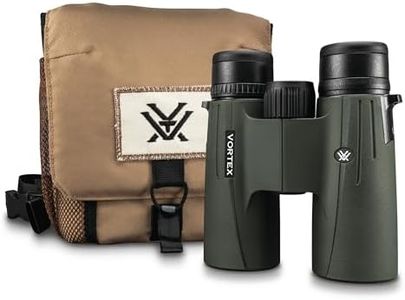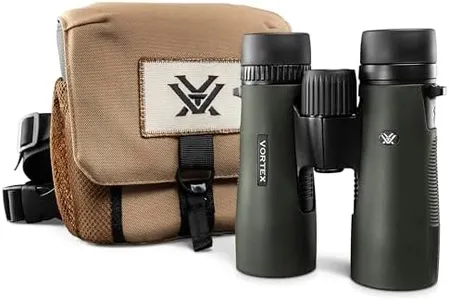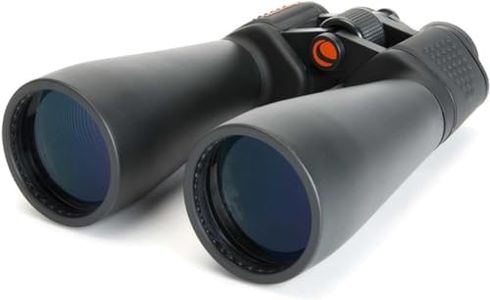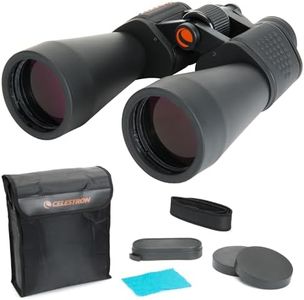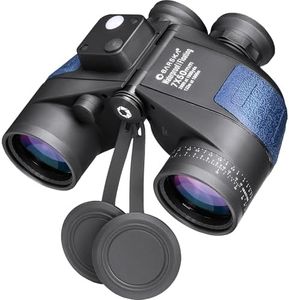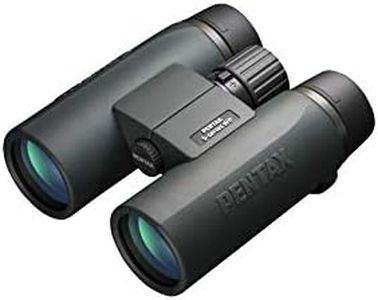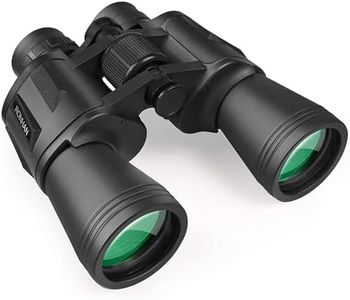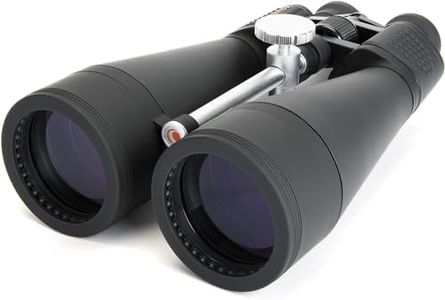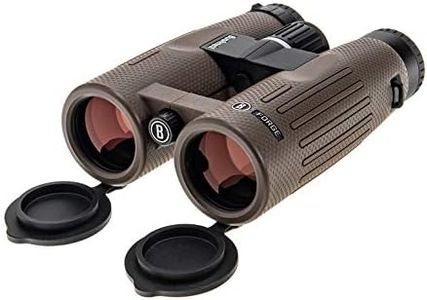We Use CookiesWe use cookies to enhance the security, performance,
functionality and for analytical and promotional activities. By continuing to browse this site you
are agreeing to our privacy policy
10 Best Astronomy Binoculars
From leading brands and best sellers available on the web.Buying Guide for the Best Astronomy Binoculars
Choosing astronomy binoculars can greatly enhance your stargazing experience and make it more enjoyable. Binoculars are often more user-friendly than telescopes, offering a wide field of view and easy portability, which is perfect for beginners and casual observers. The key is knowing what features matter most for night sky observation and finding the right balance for your needs, so you end up with a pair that is comfortable, practical, and suited to what you want to see in the sky.MagnificationMagnification describes how many times larger the object will appear compared to the naked eye, and it’s typically the first number you see (for example, in '10x50', the '10' is the magnification). For astronomy, too much magnification can actually make images dimmer and harder to keep steady, while too little might not reveal enough detail. For general stargazing, a magnification of 7x to 10x is common: 7x is great for wide views and easier to hold by hand, while 10x lets you see a bit more detail but is harder to keep steady. If you want higher magnifications (above 12x), a tripod is recommended for stability, but for most beginners, sticking with 7x to 10x is a good idea, especially if you plan to hand-hold your binoculars.
Objective Lens DiameterThe diameter of the objective lenses (the big lenses at the front) is measured in millimeters and is the second number in the specification (so, in 10x50, '50' means a 50mm objective lens). This size determines how much light your binoculars can gather; more light means brighter images, which is crucial for stargazing since celestial objects can be very faint. Smaller diameters (under 40mm) make binoculars lighter and easier to handle, but may not be bright enough for night use. Medium sizes (around 50mm) are a good all-rounder, providing enough brightness for astronomy without being too heavy. Larger sizes (over 60mm) gather more light for faint objects but are bulkier and often need a tripod. Think about how much weight you are comfortable carrying and whether you'll need extra brightness for darker skies.
Field of ViewField of view tells you how wide an area you can see through the binoculars at a glance, and is usually expressed in degrees or as a width at a certain distance. A wide field of view makes it easier to find and follow objects in the sky, such as star clusters or the Milky Way. Narrower fields give more detail but can make navigation challenging for beginners. For astronomy, look for binoculars with a field of view above 5 degrees if possible, as this gives a nice wide 'window' on the sky and makes locating objects easier. If your main interest is tracking single objects like planets, a slightly narrower field may be acceptable.
Exit PupilThe exit pupil is the size of the beam of light that comes out of the eyepiece, calculated by dividing the lens diameter by the magnification (for example, 50mm lens/10x magnification = 5mm exit pupil). A larger exit pupil means brighter images and is particularly important for low-light conditions. Most adults' eyes can make full use of 5-7mm exit pupils in the dark, but as you age, your pupils might not dilate as wide. For astronomy, aim for an exit pupil between 5 and 7mm for maximum brightness; if your main observing site is under heavy city lights, a smaller exit pupil (around 4mm) might help cut down stray light.
Weight and SizeThe weight and physical size of binoculars can affect how long you can comfortably hold them for stargazing sessions. Lighter binoculars (under 1kg) are easier to use for longer periods and are simpler to carry on trips, but may have smaller objective lenses, which can affect brightness at night. Larger, heavier binoculars may need a tripod to hold steady for detailed viewing; this is especially important if you want to look at faint deep-sky objects for more than a few moments. If portability and hand-held use are priorities for you, go with something lighter and more compact. If you are comfortable using a tripod, heavier models can offer more power and brightness.
Weather Resistance and Build QualityAstronomy often happens outdoors, where you might encounter dew, cold, or accidental bumps. Binoculars with waterproof and fog-resistant features are better suited for regular outdoor use, and models with a rubber coating can withstand minor impacts. Build quality matters for durability and long-term value. If you plan to take your binoculars camping, to different locations, or use them throughout the year, prioritize models that are well-built and weather-resistant.
Focusing MechanismHow you focus the binoculars can make a difference in ease of use, especially in the dark. Most binoculars use a central focusing wheel, which adjusts both sides at once, plus a diopter adjustment for fine-tuning one eye. Smooth, easy-to-use focus controls help you get sharp images, especially helpful if you’re scanning for different targets in rapid succession. If possible, try the focusing mechanism to make sure it feels comfortable and intuitive for you.


